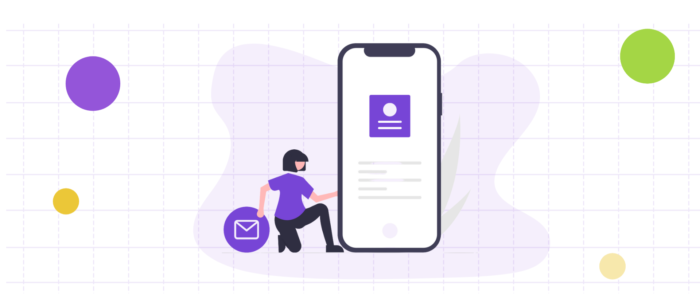Data Analytics for Nonprofits: What You Need to Know & Why You Should Care

Data is everywhere. As people use technology, click on blog posts, or search for Grey's Anatomy on Netflix, they leave a data trail.
To conceptualize this, studies suggest that by 2020, 17 megabytes of new information will be created every second for every human being on the planet.
But what does this mean for nonprofits?
Increasing access to data allows nonprofits to achieve more with less. Both tech-savvy and novice nonprofit professionals can use CRM and other smart software to collect, store, process, and share data.
With the right approach, you can turn data analytics into a powerful tool for your organization - helping to streamline operations, shore up your weaknesses, and target your fundraising campaigns.
Download our free guide to discover the metrics every nonprofit should be tracking.
What is Data Analytics?
Data, in short, is a collection of raw information, including text, numbers, images, audio, or video. The contacts in your email list, the number of donations you’ve received last year, or the records you’re keeping in your volunteer spreadsheet are all examples of data you might have in your organization.
But, data for the sake of data is meaningless. To turn data into something actionable, you must shape, process and interpret it. That’s where data analytics comes in.
Data Analytics is the process of transforming data into knowledge.
Through data analysis, data becomes relevant, useful, and valuable. It empowers you to make informed decisions, and take your nonprofit to the next level.
How can Data Analytics help your mission grow
Decision-making and problem-solving are the day-to-day of every nonprofit. Now, imagine being able to cut both the time and effort required to do them? What if I told you all you needed was the right data?
Analytical tools won't replace you as an intuitive thinker. Years of experiences and personal relationships are, and will always be, the heart of nonprofit work. However, Data Analytics can act as a compass for you and your organization . It can help review campaign performance, improve donor communications, and increase work efficiency.
Data has the potential to become a powerful addition to the work you do, providing the insights you need to make better decisions.
Here’s why a data-driven culture will take nonprofit work to the next level.
Make better decisions
Data is not an end in itself, but rather the starting point of a process whose ultimate end is to empower you to make informed decisions. By analyzing the data you already have, you can identify patterns and opportunities that will help you better understand your supporters and the impact you’re making.
Data gives you an overview of:
- What happened. At this level, data helps to give context to a situation. For instance, email marketing metrics can help you understand which email received the highest open rate or the most engagement.
- Why it happened. Here, you’re looking at variables that go into explaining why a certain outcome happens. This helps you answer critical questions like why donors seem to repeatedly give more to a specific impact area, or why your revenue grew significantly in November last year.
- What could happen? Here’s the real power of data - to guide your strategic decisions for the future. Once you’ve analyzed your past results, you can predict what will drive success in the future.
Work smarter, not harder
When you use your database to its full potential, you can be more strategic in your work because you know where to focus your efforts.
Data gets you on the right track, helps save time so you can focus on growing your mission. For instance, when running a fundraising campaign, targeting large donors can be costly, labor-intensive, and sometimes ineffective.
But what if you could target only the donors who are most likely to donate?
Increasingly, nonprofit technology helps organizations identify the prospects that are most likely to give with a high degree of accuracy.
Keela recently launched Donor Score , a tool to score your donors based on their past giving history. Leveraging such tools can help you prioritize the right donors while saving precious time and money.
Build better experiences for your supporters
With data analytics, you can cultivate the right people, on the right channels, at the right time.
This can be extremely helpful when it comes to managing volunteers because you can harness data to better understand their needs.
If you have the tools to analyze past volunteer experiences, you can schedule their time more effectively, and track their efficiency and work satisfaction.
With this kind of information, you know when to ask them for more involvement, and when they are at maximum capacity and need your support.
It’s easier than you think
At first glance, getting started with data-driven approaches might seem daunting. But as you start organizing, and analyzing your data, you’ll become more familiar with these practices.
Automated tools for data collection and data analysis can be handy in this journey.
Investing in analytical tools can help you speed up the process and ensure that nothing slips through the cracks along the way. But nothing prevents you from getting started with very basic applications such as Excel spreadsheets.
Let’s dive into the key elements that will put you on the right track to become a data-driven nonprofit.
5 keys to be an effective data-driven organization
1. Collect data strategically
The journey to create a data-driven culture starts with defining a clear data strategy. Collecting as much data as possible, without considering what you want to do with it, is not effective.
Being strategic with data means identifying the key questions that need answering.
Before moving forward, ask yourself, what it is that you are trying to achieve and how data can help you get there. Then, you can start collecting the data that will help answer those questions.
For instance, if your goal is to get a better understanding of your donors, you might want to know:
- Who are my donors?
- What are their interests?
- How do they interact with my organization?
- What are the best channels to reach them?
To answer these questions, you’ll need to track donor demographics, business occupation, giving history, and engagement history. Such information can be pulled from your donor database as well as marketing analytical tools.
2. Store your data in a database
With a clear strategy in mind, you have identified the data you need to track. Now, you need to store your data somewhere where you can continue to update and add information.
Depending on your needs and capacity, you can use Excel spreadsheets or a nonprofit CRM like Keela.
With CRM software, you can collect, track and access data without lifting a finger. A CRM automatically pulls personal details about your constituents and organizes this information to give you a complete record of your relationships. CRM software, like Keela, also offers reporting tools to analyze data and future trends.
3. Keep your data clean
Data health and accuracy are critical for any analytical effort. Whether you’re storing data in spreadsheets or CRM software, you need to implement good data practices. This will help avoid confusion, like sending the same email twice or calling a donor to realize your co-worker already did.
Keeping data clean starts with ensuring data consistency.
A lack of consistency in data handling can quickly affect data quality. It’s critical to make sure everyone is on the same page.
Whether you're gathering and inputting data automatically or not, it’s important to systematize data entry. For instance, you should put in place consistent conventions for names and contact information.
Moreover, you should review your database regularly. This includes checking for old data (such as email addresses) and looking out for duplicates.
Finally, it’s important to develop a data recovery strategy. Accidents happen and any major loss of data could jeopardize your work. Make sure you and your team members have a consistent strategy to back-up your data.
4. Tell a story
Don't reduce data presentation to cold hard numbers. Find ways to show off your findings in a digestible and compelling format. This is crucial to becoming an effective data-driven organization.
Ask yourself, what story does your data tell?
It should display what your organization achieved and where you’re headed in the future. It’s about showing the what, how, and why. Rely on visuals, like infographics or slideshows, to more easily present your data.
5. Involve everyone
If you want to be a data-driven organization, it needs to be woven into the day-to-day practice of everyone. Data shouldn't be a foreign object that gets in the way of work.
You should use data to enhance your work.
Have a fundamental shift towards making data-driven decisions at every level of the organization - human resources, marketing strategy, development, and strategic planning. Data shouldn’t be a one-off tool but THE tool that fuels the work.
The key for this to work is to make your data accessible and transparent to everyone in your organization.
Facilitate this by creating dashboards where your staff can track data over months. Host regular touchpoint meetings to discuss important findings and turn data into actions.
The exciting future of Data Analytics for nonprofits
The rise of Machine Learning and Artificial Intelligence (AI) is improving the collection and automation of analysis processes. With powerful analytical tools and an increasing data-transparent environment, nonprofits can get sharper insights more reliably than ever before.
For example, with AI, nonprofit professionals can personalize their communications in the blink of an eye, such as adjusting the content and tone of emails to a specific audience. This will create even stronger relationships with donors and volunteers. Gone are the days that donors receive the same email at the same time.
But none of this matters if you don't have the data. It is the foundational element that makes intelligent technology so powerful. Now, more than ever, data collection and data storage is critical to the success of the nonprofit sector.
.svg)



